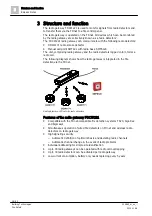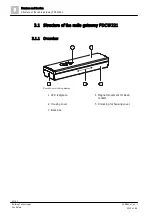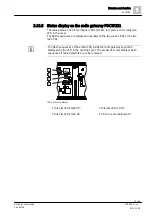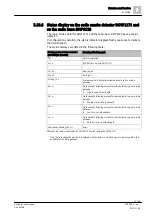
Structure and function
Structure of the radio smoke detector DOW1171
3
26 | 82
Building Technologies
009865_m_en_--
Fire Safety
2015-11-06
3.2.1 Parameter sets for the radio smoke detector DOW1171
The radio smoke detector DOW1171 has efficient detection algorithms to
distinguish between fire events and deceptive phenomena. Measured values
above a response threshold are not the only basis for reaching a danger level. The
smoke density progression is also observed over a longer period of time and
evaluated using algorithms.
The algorithms contain among other things filters to suppress short-term
disturbances. Slow signal changes as a result of soiling are compensated for by
automatic digital compensation. The extremely slow compensation ensures that
very slowly developing fires can be detected too.
The sensitivity of alarm activation by radio smoke detectors DOW1171 can be set
per detector point.
The table below contains lists of possible parameter sets and the average
response times using test gas:
Parameter set no.
Parameter set name
Average response time using test gas
[s]
1 (Default)
No verification
Test, applications not critical for
deception
15
2
Short verification time
60
3
Average verification time
85
4
Maximum verification time
105
5
Maximum verification time,
also with strong filtering
105
Response sensitivity D
1
of the radio smoke detector: D
1
= 3.3…4.0 %/m
Environmental influences
The smoke sensitivity of the radio smoke detector DOW1171 typically changes
±10 % over the entire operating temperature range.
The radio smoke detector DOW1171 is resistant to ambient light, air flows and
other changes within the specified data.
3.2.2 Scope of delivery
The radio smoke detector is supplied as 'DOW1171/DBW1171 radio smoke
detector under the order number S24218-F62-A7. The following are included in the
scope of delivery:
●
1x radio smoke detector DOW1171
●
1x base DBW1171
●
2x 9 V lithium manganese dioxide batteries
See also
2
2






































